Maximize your teaching impact with engaging Bible study lessons that shape elementary students' moral standards and spiritual growth.
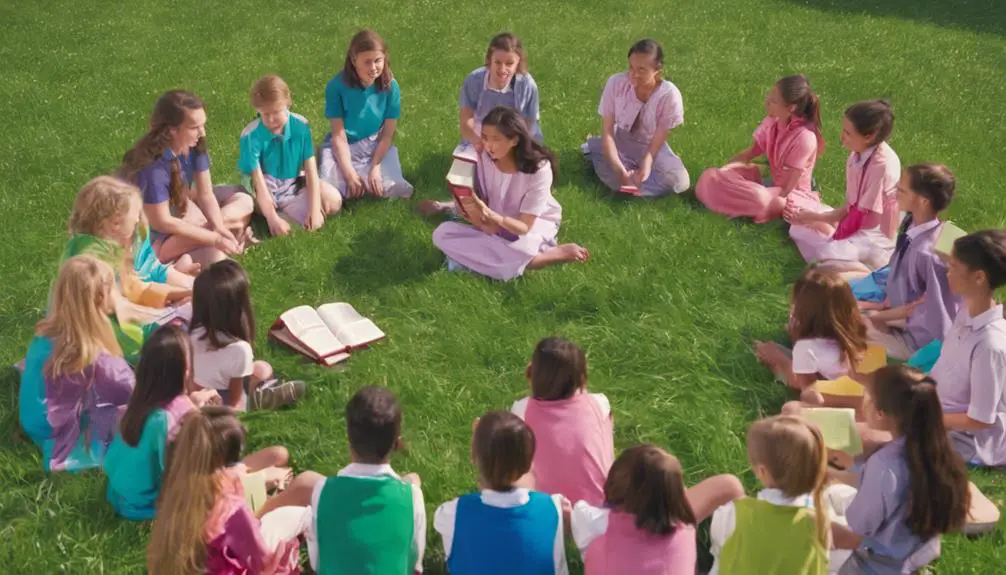
A Good Bible Study Lesson for Elementary Students
Did you know that 85% of lifelong moral standards are established by age nine? As a teacher, you've got the unique opportunity to shape these foundational beliefs through engaging and age-appropriate Bible study lessons.
You're not just imparting knowledge, you're impacting young lives.
So, how do you design a Bible lesson that not only grabs their attention but also leaves a lasting spiritual imprint? Let's discover together.
Key Takeaways
- Select age-appropriate Bible stories that children can relate to and understand, using simple language and familiar narratives.
- Implement interactive teaching methods such as role-play, crafts, and music to engage students and reinforce lessons.
- Create detailed lesson plans with a clear framework (Engage, Study, Apply) and connect lessons to real life situations.
- Assess the impact of each lesson through observing changes in students' behavior, soliciting feedback, and reflecting on teaching methods for improvement.
Understanding the Target Audience
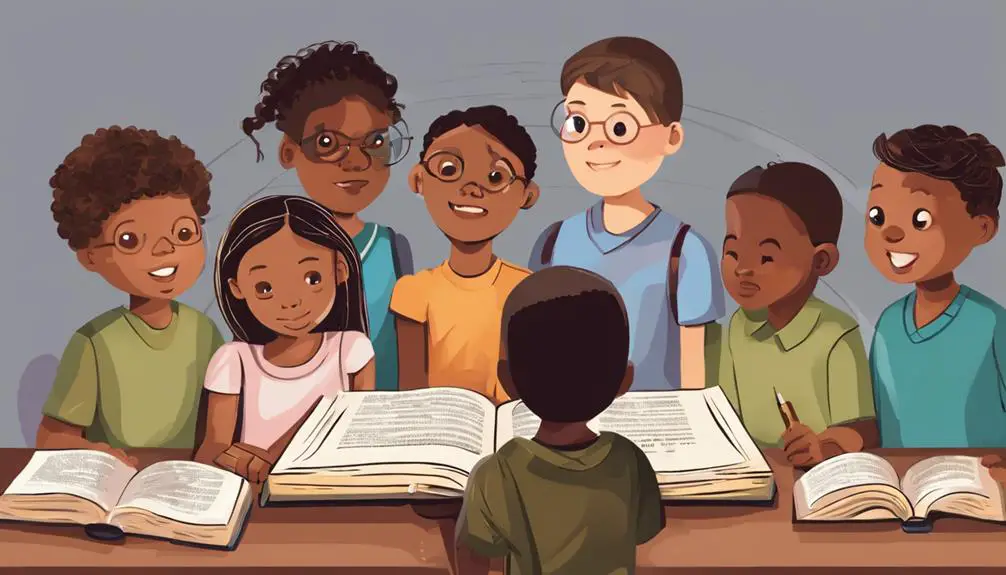
To effectively teach Bible study lessons to elementary students, it's crucial you understand their world, their cognitive abilities, and the way they perceive spiritual concepts. Elementary-aged kids view the world differently than adults; they're curious, open-minded, and full of questions. They're still learning to think abstractly, so concrete, tangible examples work best.
Firstly, it's essential to grasp their cognitive abilities. At this age, children are transitioning from concrete operational thought to formal operational thought, which means they're beginning to understand abstract concepts. However, they still rely heavily on concrete, tangible examples to make sense of things.
Next, understanding their world is vital. What're their interests? What challenges are they facing? What's their home and school environment like? You can't effectively teach if you don't understand their context.
Lastly, remember that spirituality for kids is experiential and relational. They connect best with God through stories, activities, and personal relationships. They're not yet ready for deep theological discussions, but they can understand and respond to God's love.
Selecting Age-Appropriate Bible Stories
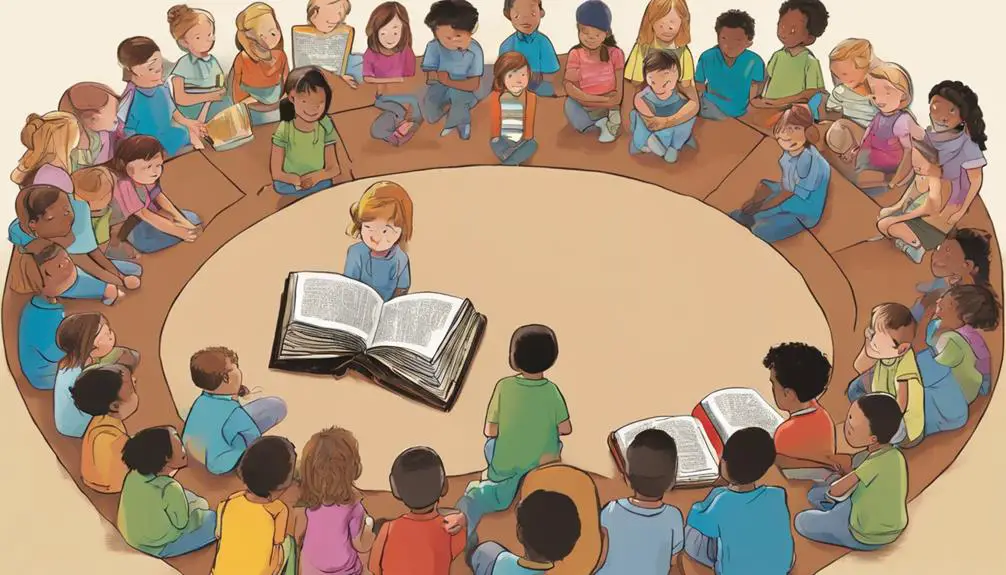
After grasping the cognitive abilities and world of elementary students, you're in a better position to choose Bible stories that resonate with them, keeping their age and understanding level in mind. Remember, the Bible is a vast book with a range of stories, some of which may not be suitable for young minds.
To make the selection process easier, start with familiar stories, such as Noah's Ark, David and Goliath, or the birth of Jesus. These stories aren't only age-appropriate but also full of lessons about faith, courage, and love. Make sure you're equipped to explain the underlying messages in a way they can understand.
You also need to consider the language used. It's best to opt for children's Bible versions that use simple, clear language. This makes it easier for them to grasp the story and its moral.
Interactive Teaching Strategies
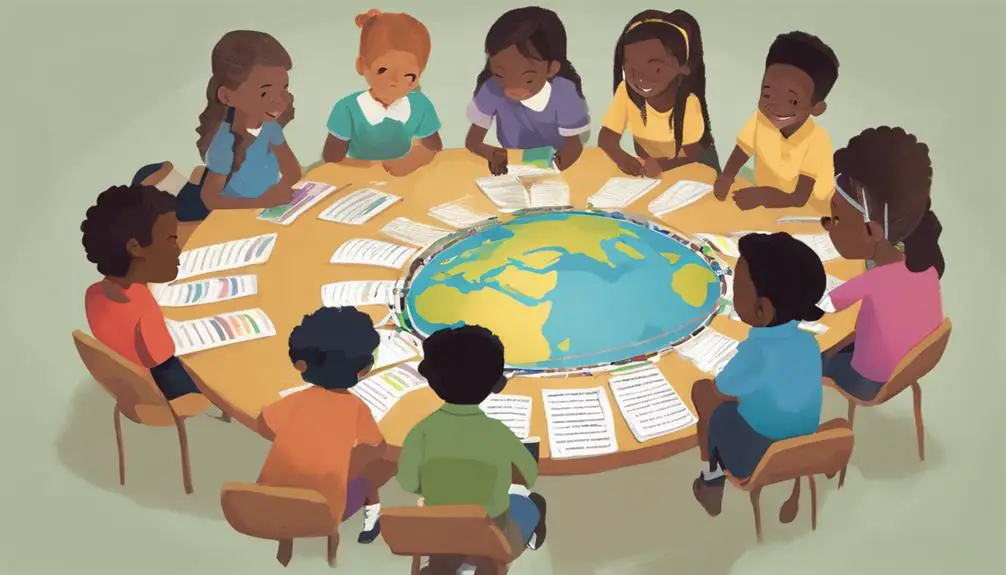
Incorporating interactive teaching strategies into your Bible study lessons can truly bring the stories to life for your young students. When you engage your students actively in the learning process, they're more likely to understand and remember the lessons.
Try using role-play as a teaching tool. Let your students act out Bible stories. This involves them in the narrative, making it more personal and memorable. You could also use crafts related to the story. This hands-on activity not only helps students understand the story better but also allows them to express their creativity.
Don't overlook the power of music. Singing songs related to the Bible stories can be a fun and effective way to reinforce the lessons. Those catchy tunes can stick in their minds long after the lesson ends.
Lastly, consider using interactive quizzes or games to review the lessons. This can make learning fun and competitive. It also provides a quick assessment of what your students have learned.
Creating Engaging Lesson Plans
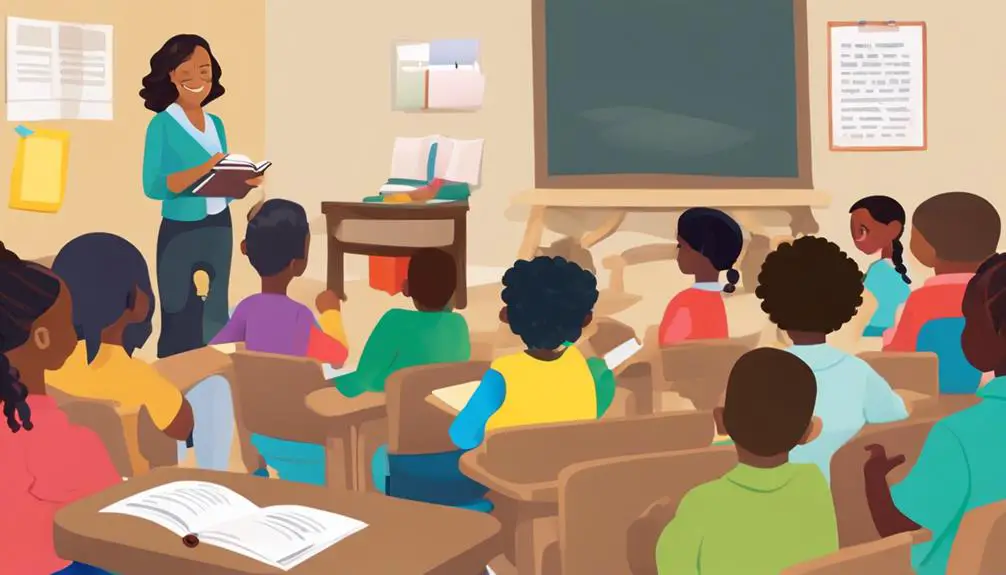
Now that you're equipped with an array of interactive teaching strategies, let's turn our attention to crafting engaging lesson plans that will captivate your elementary students. A well-planned lesson is integral to the learning experience. It's a roadmap for your teaching, guiding you towards your educational objectives.
Here's a simple yet effective framework to consider while preparing your Bible study lesson plans:
Stage |
Objective |
Activities |
|---|---|---|
Engage |
Spark interest |
Use a short video or story |
Study |
Deepen understanding |
Reading, discussions, interactive activities |
Apply |
Connect lesson to life |
Role-plays, crafts, writing exercises |
Start by engaging your students, ignite their curiosity with an interesting video or a riveting story from the Bible. Then delve into the study phase, ensuring that the students grasp the lessons through discussions and interactive activities. Finally, help them apply the teachings to real life through role-plays, crafts or writing exercises.
Assessing the Lesson's Impact

To truly gauge the effectiveness of your Bible study lessons, it's crucial to assess the impact they've had on your students. This isn't just about checking if they've memorized verses or understood parables. It's about seeing if the lessons have touched their hearts and influenced their behavior.
An effective way to assess this is by observing changes in their actions and attitudes. Are they showing more kindness? Are they more patient and understanding with their peers? These are signs that they're taking the Bible's teachings to heart.
Also, consider having a casual chat with your students. Ask them what they've learned, how they feel about the lessons, and if there's anything they'd like to discuss further. Their feedback is valuable in tweaking future lessons to better suit their needs. It's essential to create a safe space for them to express their thoughts and feelings without fear of judgment.
Last but not least, don't forget to assess yourself. Reflect on your teaching methods, and see if there are areas you can improve on. Remember, every good teacher is also a good learner. Your growth will directly impact the effectiveness of your Bible study lessons.
Conclusion
As you design Bible study lessons for elementary students, remember to keep it age-appropriate and interactive. Create engaging lesson plans that will captivate their interest and curiosity.
Always assess the impact of your lessons to ensure they're grasping the teachings. Above all, show compassion and understanding, as these young minds are just beginning their faith journey.
With these strategies, you'll surely nurture a love for Bible study in your young students.



Sign up